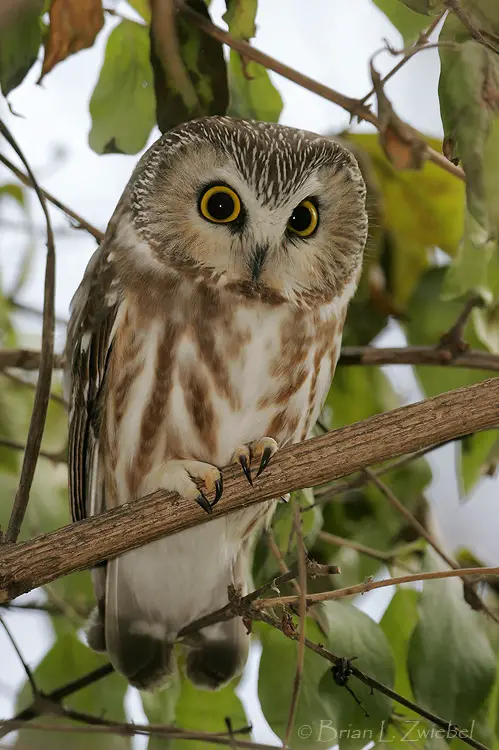This article discovers vital tawny owl facts that are not widely known. The Tawny Owl (Strix aluco) is a medium sized owl and is generally found in Eurasia. These types of owls belong to the family of Strigidae and are also known as Brown Owl. These species have brown undersides coupled with few strips that run across its underparts. Tawny owl build nest in a tree hole so as to give complete protection to its chicks.
These non-migratory birds do not allow any other bird to cross its territory as they are highly territorial. With its exceptional eyesight, these owls rarely miss any prey. The close relatives of tawny owls are Hume’s Owl, Ural Owl, and North American Barred Owl. Tawny owls are one of the most aggressive birds in that they don’t allow anyone (including humans) to approach their nests. Eric Hosking, a famous bird photographer paid a huge price, when he attempted to photographed one of the tawny owl’s nests, in terms of losing one of his eyes. Later, he named his autobiography book as An Eye for a Bird.
Tawny Owl Facts
- The length of the tawny owls is about 37 – 46 cm (15 – 18 inches).
- The wingspan measures around 81 – 105 cm (32 – 41 inches).
- These birds weigh around 385 – 800 grams (0.85 – 1.8 lb).
- The females are 5% greater and 25% heavier than the males.
- As compared to the Eurasian Owls, these birds fly higher.
- The silent flight of tawny owls coupled with sit-and-wait quality makes it almost undetectable by its prey.
- The tawny owls’ eyesight is known to have 20 – 100 times better than the humans, because of which they can easily locate their prey even at dark.
- They usually produce hoo-hoo-hoo-hoo sound.
Tawny Owls Habitat
Tawny owl facts about its geographical distribution demonstrate that these birds largely inhabit in the Western Europe, Siberia, Central Asia, North Africa, South Asia, and Scandinavia. The Siberian owls are known to relatively greater in size and 40% heavier in comparison to the European owls.
They are commonly found in Himalayas, South Iran, Korea, Great Britain, Ireland, and Taiwan. These types of owls mainly prefer to build their habitats near-water places and mixed forests. The breeding range of these birds is 550 m (1,800 feet) in Scotland, 2,350 metres (7,700 feet) in Turkey, 2,800 m (9,180 feet) in Burma. They cover more than 9.5 million sq. km (3.8 million sq. miles), with the global population of about 950,000 – 2,000,000 owls only in Europe.
What Do Tawny Owls Eat?
These kinds of owls predominantly feed on small mammals, rodents, birds, earthworms, hares, rabbits, and beetles. They hunt mostly when the night falls or at the twilight hour.
Read More: Ultimate Guide to the Owl’s Diet

Tawny Owls Facts about its Breeding
- These birds are monogamous owls and they make partners for lifetime.
- The nesting period usually takes place in February.
- The females incubate (keeping warm) glossy white eggs for about 30 days. The size of the eggs is 48 x 39 mm (1.89 x 1.54 in) with weight measuring around 39.0 grams (1.4 oz).
- The chicks fledge out after 35 – 40 days.
- The chicks remain with their parents for about 60 – 90 days.
- The lifespan of tawny owls is 5 years; with aged tawny owl in the wild was 18 years, while under captivity the maximum age was 27 years.
- Biologists are still not confirmed about the survival percentage of the juveniles.
Tawny Owls Predators
Predators of these species include Golden Eagles, Common Buzzards, Pine Martens, Goshawks, and Red Foxes.
Species
- S. a. aluco
- S. a. sylvatica
- S. a. nivicola
- S. a. biddulphi
- S. a. willkonskii
- S. a. mauritanica
- S. a. sanctinicolai
- S. a. ma
- S. a. harmsi
- S. a. siberiae
- S. a. yamadae








